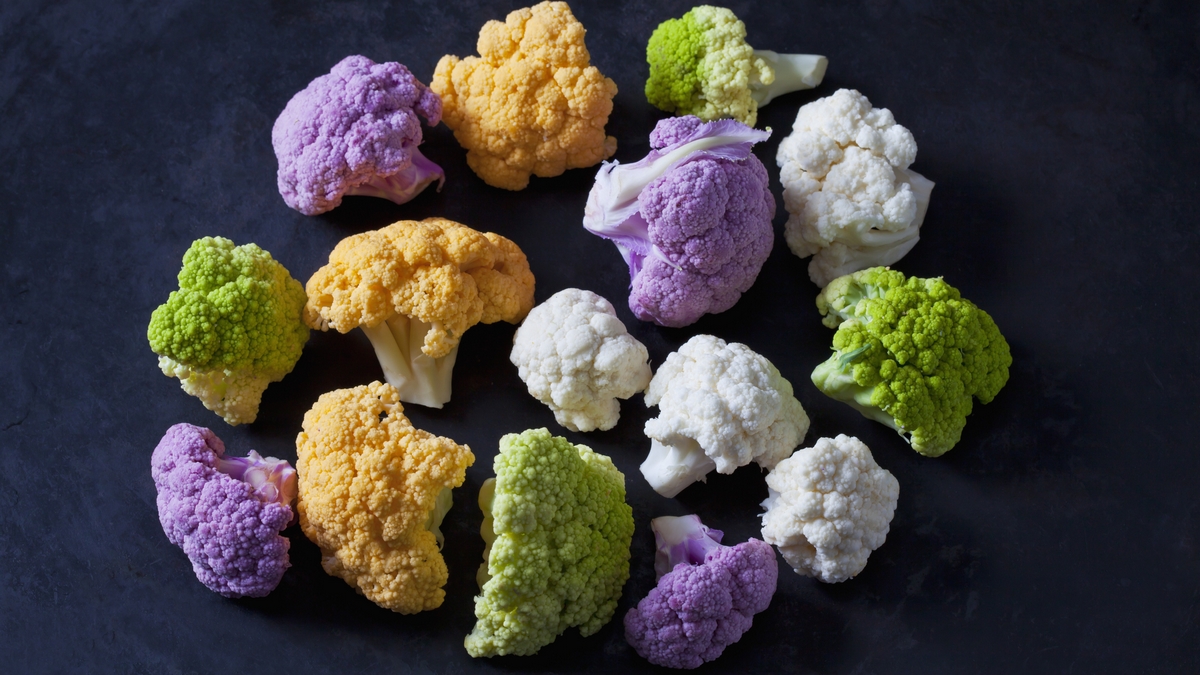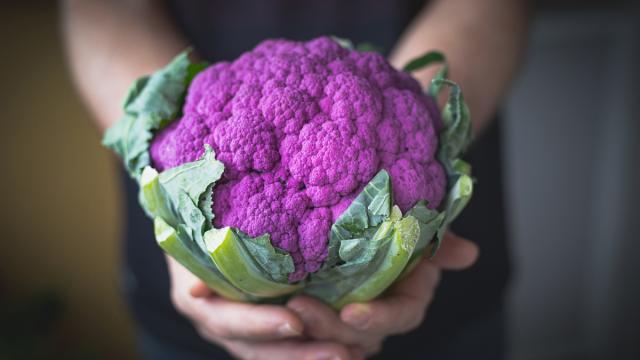Most Australians are used to seeing white cauliflower but every now and then, other varieties appear in vibrant colours — most commonly purple. But do these coloured cauliflowers taste any different and if not, what affects their colour? Let’s dig in.
The cauliflower, part of the same family as broccoli, cabbage and kale, has murky origins like many foods. It’s thought to have originated in the Mediterranean but its long history in other parts of Asia brings that into question.
Regardless of where the first cauliflower sprung up, it’s a popular vegetable around the world. In Australia, we are mostly familiar with a single variety — the white cauliflower.
The white brain-like vegetable can be described as being fairly light in flavour with a hard, nutty like texture when raw and a softer texture when cooked. But when roasted or fried and mixed with more flavourful ingredients — think Parmesan cheese, spices and salt — it can transform into a tasty and reasonably healthy treat.
Every now and then, however, your local supermarket will stock a new variety — most often the purple cauliflower but sometimes a green or orange variety might rear its head.
So, do coloured cauliflowers actually taste any different?
While a head of orange or green cauliflower might make you think it tastes slightly more cheesy or like broccoli, the flavour differences are minimal, if at all.
White cauliflowers are the default but the main differences between the varieties, aside from the obvious colour changes, lie in their nutritional value.

The white variety, according to Sydney Markets, is a good source of vitamin K and vitamin C as well as folate and vitamin B.
According to information from Iowa State University, the purple cauliflower has more anthocyanin, an antioxidant which is what gives it its rich purple colour. Research suggests the antioxidant, which is also found in blueberries and pomegranate, has positive effects on cardiovascular health among other things.
Orange cauliflowers are a mutation first found in Canada and are likely to be a little rarer in Australia. They develop more carotenoids, which causes them to turn a cheesy orange colour. These carotenoids, also found in carrots, can be turned into vitamin A by the body.
Finally, there’s the green cauliflower variety. It’s actually a hybrid between broccoli and cauliflower, called a ‘broccoflower’ and contains more beta carotene than a white cauliflower but less than a broccoli, according to Iowa State University.
So, the next time you’re stumped with choosing between getting your standard cauliflower or a new variety know that there’s really little difference in flavour. It might just make your dish a bit more colourful.

Leave a Reply
You must be logged in to post a comment.